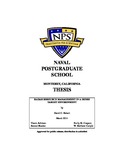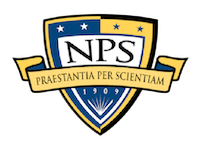Radar resource management in a dense target environment

Download
Author
Hebert, David C.
Date
2014-03Advisor
Craparo, Emily M.
Second Reader
Carlyle, W. Matthew
Metadata
Show full item recordAbstract
The coordination of multifunction phased array radars across networked platforms can enable superior functionality and battle space awareness. This thesis formulates and solves a number of optimization models and heuristic algorithms to analyze and prescribe radar-to-target assignments and schedules. One optimization model uses full target information to provide a best case assessment of the ability of a given set of radar platforms to track a collection of targets. A modified version of this model determines the impact on these results if targets coordinate their maneuvers in order to overwhelm the radar system.We then consider the more realistic scenario in which the planner's knowledge is imperfect and describe approaches for allocating radar assets to targets in that setting. The first such approach extends an existing two-dimensional geographic allocation method to three dimensions. This allows for an allocation of the operating space to radar assets and can serve as a preallocation heuristic for more sophisticated assignment algorithms. Moreover, because the existing method does not account for transfers in tasks between geographical areas, this thesis models the additional workload involved in performing handoffs of targets between radars.
Rights
This publication is a work of the U.S. Government as defined in Title 17, United States Code, Section 101. Copyright protection is not available for this work in the United States.Collections
Related items
Showing items related by title, author, creator and subject.
-
The use of agent-based simulation for cooperative sensing of the battlefield
Liang, Lawrence A. H. (Monterey, California. Naval Postgraduate School, 2005-12);Many military Intelligence Surveillance and Reconnaissance (ISR) operations would benefit greatly from a fleet of disparate sensor-bearing UAVs that are tightly integrated via a communications network, work cooperatively ... -
Optimizing the Distribution of United States Army Officers
McElroy, Jeremy S. (Monterey, California. Naval Postgraduate School, 2005-09);The U.S. Army distributes its 51,000 competitive category officers among manning targets specified by location, rank and skill that change over time in response to changing requirements. The officer inventory also changes ... -
Optimization models for allocation of air strike assets with persistence
Castro, Davi Rogerio da Silva (Monterey, California. Naval Postgraduate School, 2002-12);This thesis addresses the critical process of assigning strike aircraft to targets once the targets have been identified: How do we optimally employ available aircraft and weapons on the current set of targets, and how can ...


 14Mar_Hebert_David.pdf (4.502Mb)
14Mar_Hebert_David.pdf (4.502Mb)

